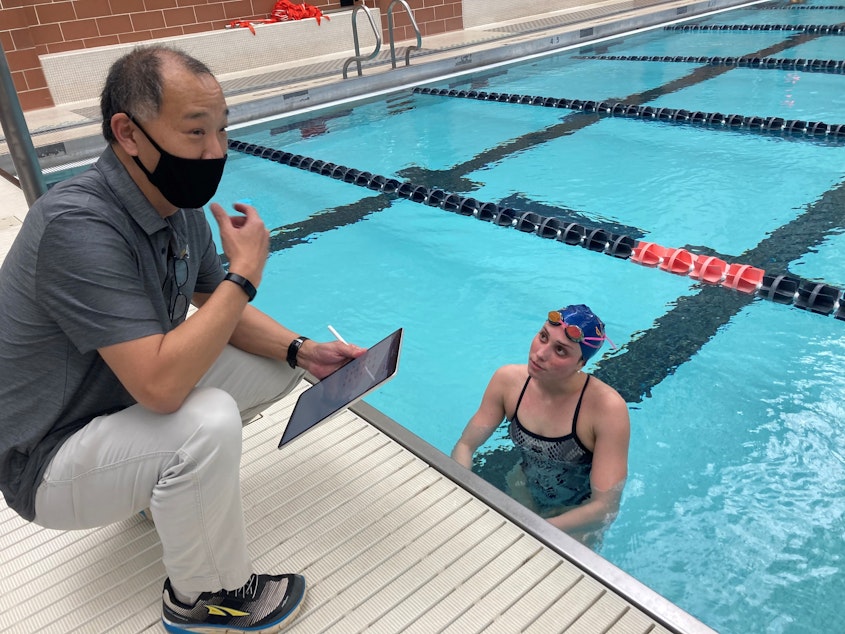This professor studies each swimmer as a math problem. It's helped them to be faster

When the NCAA swimming and diving championships begin next week in Atlanta, the University of Virginia hopes to win races with the help of a mathematician.
Ken Ono heads the math department at UVA, and he combines science and math to guide training for the Cavalier's top-ranked swim team.
Paige Madden says Ono's insights have helped her swim faster.
She was a swimming star in high school, setting seven records for the state of Alabama. She went on to swim for UVA and hoped to compete in the Olympics, but she doubted she could qualify in her best event, the 200-meter freestyle.
Then Ono studied her swimming techniques and estimated she could improve her time by six seconds.
"At the time I didn't believe him," Madden recalls, "but he did the math and said, 'I think you can do that,' and then I did!"
Ono begins his analysis by sticking small sensors to athletes' backs to see when they speed up and when they slow down.
"Those sensors give indications of where and when and how an athlete generates force, and more importantly where they're inefficient," says UVA's head swimming coach Todd DeSorbo. "The sensors can detect inefficiencies that we can't see."
Ono also puts cameras in the water to record each swim and compare points of acceleration or drag with specific motions.
As data pour in, he calculates and views every swimmer as a math problem
"It allows us to see things such as the depth of a dive, the angle at which a swimmer pushes off a wall, the distance between their feet as they set up their push," Ono says. "Everything that you can count and measure should be looked at."
"We want to help everybody optimize their race," says his research assistant Jerry Lu. He notes swimmers sometimes do things that slow them down, like positioning their heads or legs in a way that creates drag or by timing their kicks poorly.
As data pour in, Ono begins calculating and viewing every swimmer as a math problem.
"No two people have the same body type, and there are so many different factors that have to come together to make a world-class swimmer," Ono says. Without data, he explains that swimmers and coaches have to guess how to improve their times. "We don't guess!"
Athlete Emma Weyant also can vouch for Ono's approach.
He studied her performance in the pool, then he told associate coach Blaire Bachman how Weyant could be faster.
"The distance she is from the wall when she initiates those turns correlates to the power and acceleration that she gets when she pushes off," Bachman explained. "There's at least a tenth of a second on every single turn for her that over the course of a 500 or a mile race adds up to anywhere from 6 to 9 seconds."
After training with the math professor, this swimmer won an Olympic medal
Weyant trained with Ono before the Olympics in Tokyo and came home with a silver medal. "That was probably one of the best experiences of my life!" she says.
And teammate Madden was able to compete better after Ono discovered her right side was weaker than the left. By building up that right side she improved enough to qualify for the Olympics.
"When you get to this level in college, you're only going to get better by making very subtle changes, because you're already doing a lot of things right," Madden says. "I had to tuck my chin a little bit more to reduce drag. I also adjusted my hand position when I'm turning. It's just very small things like that that have been helpful."
Madden was part of the women's 200-meter freestyle relay, which placed second in Tokyo, beating the Australians who were expected by many to win.
She has since turned pro but is still training with the UVA team in Charlottesville and assisting Ken Ono with his work. The two will be cheering when, after hours of work in the pool and hours of mathematical calculation, the Cavaliers dive into the NCAA Championship in Atlanta. [Copyright 2022 NPR]

